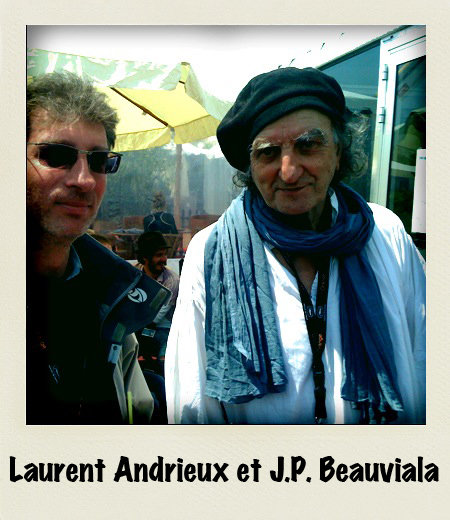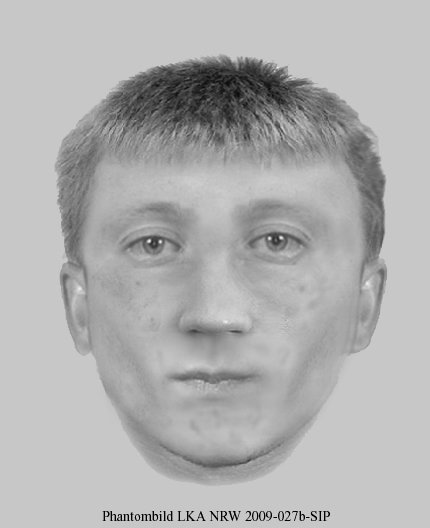
Laurent Andrieux
Premium Member-
Posts
1,458 -
Joined
-
Last visited
Everything posted by Laurent Andrieux
-
Hello guys, I've been informed that the links I gave above seem to be dead. It's not really the case, the files are still there. The only point is that the tiff files now require .tiff as an extension, not .tif anymore. Therefore please find the proper links : http://l.andrieux.free.fr/mire_scope_2.tiff and http://l.andrieux.free.fr/mire_scope_3.tiff You also can find the files here : http://cinematographie.info/index.php?app=downloads&showcat=22 Thanks Neil for advising me. Best to all of you.
-
Thanks Richard ! Yes you're right. I edited my post, but though it certainly has no sense looking for a C41 process for film actually I wound't mind a C41 process either actually, it's a special look we're looking for. So let's say I'm looking for a ECN2 process for E6 reversal S8 or 16/S16, basically. I'll ask Deluxe on Wednesday, thanks for the info.. Does any body know if either Technicolor or Stanley in Soho may do that ?
-
Hi all, For an indie project I'm going to shoot here I'm looking for a lab - preferentially in London for different reasons - that would be able to cross process some Super 8 or 16/S16 reversal stock. It's not decided yet either we will shoot S8 or 16/S16 (issues in finding a lab may actually take part in the decision) and we want to shoot Ektachrome D100 (E6) and process it ECN2 or even C41. Ideas in other countries from Western Europe are welcome too. Thanks in advance !
-
Right, Georg. Jon Fauer, ASC has released a special edition of his excellent "Film and Digital Times" devoted entirely to Alexa from ARRI. In addition to tracing the history of the creation of this camera, there is a complete and very well illustrated story about its production studios in the heart of ARRI Munich. You can download the PDF in high resolution here. Enjoy !
-
Very interesting, thanks a lot ! Do you have a link to this interview ? To pictures of your DP working or testing the Alexa ? Thanks again !
-
Hello, Adam, thanks for the info. What is your source ? Do you have a link ?
-
Hi all, We have original pictures and videos on cinematographie.info. Be welcome !
-
Yes David, you're right. The sensor has had some improvements but it's built on the basis of the Origin's, if I understood well what Jean-Pierre said. He enlighted the low smear ability of the sensor for instance, and put forth the fact that the high sensitivity is due to the low amount of lost space between pixels. It's like the Alexa's sensor took benefit of the ARRI D-21's R&D, making the Alexa much cheaper than the D-21. They improve their sensors, but the basis is the same, making the new ones cheaper, therefore.
-
I was talking with Jean-Pierre during the Cannes film festival and he confirmed the sensor is made by Dalsa. It basically is the Origin sensor, but there is a special system that allows the dual sensitivity. And yes, it is 4K RAW You can read more informations here. It's a French forum, but you can find in the topic some informations in English as well.
-
Yes Tim, I actually got involved a lot in our french site and different things that I can't mention here...
-
Hello, Stephen Tim and everybody. I think he said something about it but I'm not sure. I'll ask Thomas to check that up. You can see the itw on our site.
-
Good idea. As Jean-Marie Delorme said, we'll provide a list with serial numbers ASAP.
-
That's the point...
-
After 2 cameras rep had Arricam cameras stolen in Germany, what seems to be a team from Easter Europe broke in Cinecam-Panavision near Paris last week-end. They stolen 35m, S16, and HD cameras, more than 25 in total, plus lenses and accessories. Every member of the community has to be very carefull if considering buying second hand equipment in the next weeks or months. I will forward the serial numbers as soon as I have them. Here attached are 2 phantombilds of two guys wanted for the burglary in Germany. We have no informations that the same team robbed Cinecam-Panavision in Paris, though.
-
YouTube accepts fast flv uploads!
Laurent Andrieux replied to Karel Bata's topic in General Discussion
Interesting. Can you give a reference or source ? -
New : DichroFilm by Rosco
Laurent Andrieux replied to Laurent Andrieux's topic in Lighting for Film & Video
You have a price list ? -
Formula for Calculating Shutter Angle Exposure Compensation
Laurent Andrieux replied to Steven Wyatt's topic in 16mm
The shutter angle changes the exposure time, that is all. Then, refer to Stephen's post : Normal aperture is 180°. It's exactly half of the whole cycle (the film will be tracked to the next image in the remaining time). If you operate at 24 fps, setting your shutter at 180° makes your exposure be half of the whole cycling time, ie 1/48 s If you close the shutter to 90°, then the exposure time is devided by two and then becomes 1/96 s, therefore, as Stephen says, you loose 1 stop, etc. Dig it ? May be you are wondering about a special aperture, like 144° ? Or is it that you want to close the aperture for a special effect, reducing the time exposure, and wonder what effect will occure on the exposure ? Is it that you are a student and don't understand something in your course ? Refine your question and we would answer more helpfully... Best, -
Formula for Calculating Shutter Angle Exposure Compensation
Laurent Andrieux replied to Steven Wyatt's topic in 16mm
General formula is t=A/(C.360) where t is the exposure time, A the shutter angle in degrees and C the camera frame frequency (24 or 30 fps for instance). Your exposure compensation depends on the calculated exposure time, using the reciprocal relation between exp. time and T stops. Sorry it's a very quick answer, but it may fit your question. Does it ? Otherwise, please be more precise about it. Thanks. -
Hi everyone, Our french website for cinematographers, http://afcinema.com (some pages are in English), informs us that Rosco manufactures a new type of dichroïc gels for light sources. Here's the link to the Spec Sheet : http://www.rosco.com/us/filters/dichrofilm.asp There is no mention of the price, nor of the filters absorption. Nevertheless, if I'm not mistaking, dichroïc filters absorb much less than usual gels. Has anybody tried those ? Metered the absorption of the ones that were used ? Thanks for your replies !
-
Recreating The Look of "The Natural"
Laurent Andrieux replied to K Borowski's topic in General Discussion
Karl, I just deleted the "wrong" topic you created by mistake, as you requested through your "report". I tried to send you a pm but your mailbox is full. Sorry I can't clean it ;) . Regards -
It's nearly a half century ago that nobody works in SECAM in post anymore. SECAM is a great broadcasting system, but PAL has always been used in production for a very long time now, all over Europe - not to mention the fact that it's about 20 years that SD broadcast production doesn't use composite anymore, but component formats, or digibeta, almost 15 years. It always make me laugh when people seem to consider SECAM a a bad system, althought it doesn't need a hue setting, like NTSC does. I really wonder how it is just possible to work in this industry (SD Video) in an NTSC system, considering color rendition... but if you don't mind the colour... I like the conversation, but hey, I gotta go to work, going to the Carlton for interviews. Anybody here is in Cannes, these days ?
-
No because you can't devide by (a^2-a*b ) if it equals zero and if a=b, a^2-a*b = a(a-b ) = 0 Too bad, hum...
-
Sorry, it actually is "Séquentiel Couleur à Mémoire" (Memory Color Sequential) And I think it's "Phase Alternated Lines"




